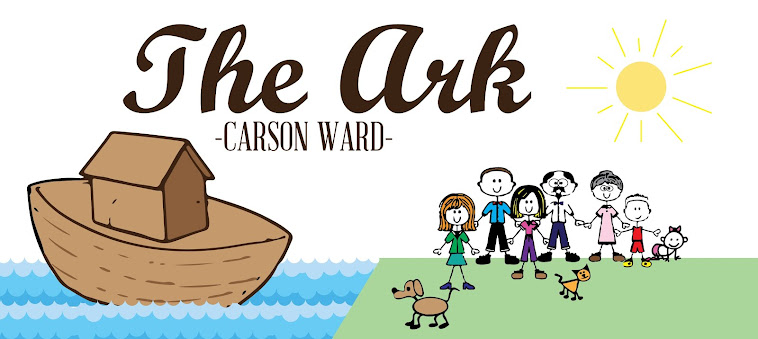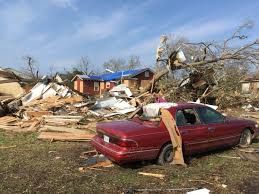May this new year bring you an unabiding faith in our Savior Jesus Christ, answer to your prayers, love, more time with family, a desire to service others more, forgiveness, peace, happiness, joy, prosperity and all you hope it to be.
The Ark 2018 Emergency Preparedness Goals
This past year 2017 has been overwhelming hearing about all the natural disasters just in the United States, hurricanes, tornadoes, flooding and wildfires.
This 2018 we have set goals for our Torrance California Stake and Wards. Anyone following this blog is welcome to follow our 2018 emergency preparedness goals to become better prepared. We will be working on these goals throughout 2018.
- Each family acquire a 3-Month Supply of Food and Water (We will be working on this for 2018. See the Monthly Assignment below.)
- Each family member have a 72 Hour Individual Emergency Preparedness Backpack (See last years monthly assignments from January 2017 to December 2017 if you have not completed yours or need to update.)
- Each Ward offer a First-Aid/CPR Class for its members (Information on how to set this up to following in a few weeks)
- Each Family have at least one items in each Emergency Supply Category (Cooking, lighting/electricity, heating, shelter, sanitation, etc.)
- Each individual and family become better prepared for the type of disaster in your area
First, my heart and prayers go out to all those you have lost loved ones, property and who have experienced devastation from the disasters throughout the United States. May you find peace and comfort.
2017, in the United States alone, has been a year hit by devastating natural disasters and other disasters . . .
What will 2018 hold?
Hurricanes:
 Hurricane Harvey, category 4, hit Texas, Louisiana and Alabama causing devastation, torrential rain and record flooding for millions of people. 84 deaths.
Hurricane Harvey, category 4, hit Texas, Louisiana and Alabama causing devastation, torrential rain and record flooding for millions of people. 84 deaths.Hurricane Irma, category 5, hit the US Virgin Islands, Cudjoe Key, Florida, South Carolina, Georgia coasts and Puerto Rico. It destroyed one quarter of the buildings in the Florida Keys. There was devastation and flooding. 95 deaths.

Hurricane Maria, category 4, hit Puerto Rico head-on causing devastation to the island and its infrastructure, flooding and mudslides. Many areas are still without the necessities of clean drinking water, power, shelter and food. As of today they only have 50% of their power restored. Authorities say it will takes months, maybe years to rebuild and resources to return. It also hit Dominica and the Bahamas. 38 deaths.
Tornadoes:
Southern States were hit by 79 tornadoes across the Gulf States and South Carolina causing devastation and 24 deaths.
Central/Southeast States where 70 tornadoes swept across causing widespread damage and 6 deaths.
Midwest where 11 states sustained damage and 2 deaths.
Floods:
Northern and Central California where heave rains caused massive damage from floods, mudslides and erosion. 5 deaths
Missouri/Arkansas where rainfall breached levees and caused disastrous flooding along rivers in Missouri, Arkansas, Illinois and other states. 20 deaths.
Wildfires:
Northern California where 210,000 acres burned destroying thousands of homes, business, and forcing evacuation in the state's wine region. 42 deaths.
Southern/Central California where many homes and business were lost. One firefighter lost his life and others. Burned for days, weeks from Ventura to Santa Barbara.
Oregon where 1,069 wildfires burned over 450,000 acres. The fires were mostly along the coast making it hard to travel the 101 highway and smoke traveling past the Interstate 5 making it hard to breath.
Montana where 48 wildfires burnt 1 million acres. Farmlands were damaged and homes. In California we hardly heard about these devastating wildfires.
With all that has happened this past 2017 what can we expect in 2018? Are you ready? Are you prepared for what may come your way?
What will happen if a 7.8+ earthquake hits California?
I think we have no clue as to how much devastation the major earthquake will cause. Watch the video below to see what can happen and if you are ready . . .
Will you be ready when "The Big One" hits, or whatever natural disasters you have in your area?
The postings on the right side of this blog and the monthly post and assignments will help you be better prepared. Once the disaster is upon you it is too late! We need to be ready for the aftermath.
3-Month Food Storage . . .
Many years ago members of The Church of Jesus Christ of Latter-days Saints were admonished to store a years supply of food, mainly the basics: wheat, oats, beans, rice, honey, powdered milk, salt. A few years ago the church realized this was overwhelming for many members and the First Presidency announced that each house hold should first work on getting a 3-months supply of commercially canned (and home canned) and packed foods, foods their family eat on a daily basis. This year we are going to work on our 3-months supply of food (and water) storage.
Assignment: This month keep track of everything you as an individual or family eats in a 2-4 week period. Most families eat the same thing within a 2 week period. Attached below you will see a chart for each week to print and put on your refrigerator. Each time you eat breakfast, lunch, dinner and snacks write down the items. Once you have done this write down the ingredients for each meal and dish you make, include all ingredients in the dish, including seasonings and spices. Also, include when ever you eat out. This will give you a basis of what your family eats in 2 weeks. You can do it for 4 weeks to get a better list. Once you have done this start adding those items to your food storage. You can start adding canned and packaged items to your food storage before you finish this assignment.
First work towards a 2 week food supply, then a month, then 2-months, 3-months. You will be amazed how fast it will accumulate by adding extra cans and packages of food each time you go grocery shopping. Especially pay close attention to sales items. Then you can buy more. Keep an inventory of what you have. If you have already started your 3-month food storage, take inventory of what you have and continue to add until you reach your goal.
YOU CAN DO IT!
DO NOT PURCHASE DAMAGED OR DENTED CANS OR PACKAGES!
WARNING: Watch purchasing food from discounts stores like The 99 Cent Store, The Dollar Tree, etc. They are usually selling items that will expire very shortly, a waste of your money. You are looking for longer term storage, 2-5 years.
ONLY STORE WHAT YOUR FAMILY WILL EAT! Do not waste your money on buying something just because it is on sale, full well knowing your family will not eat it.
Where to store your commercially canned and packaged food storage . . .
Be creative. This is the time of year when we tend to clean out closets and reorganize. One idea is to move linens to a drawer and use the linen closet for your commercially canned and packaged foods. Under the bed storage containers also work well. Living/family room side lamp table and coffee tables should be purchased allowing storage space. You will probably have your food storage in various places throughout the house. In your inventory keep a record of where they are stored. If you can keep from it, DO NOT STORE YOUR FOOD IN THE GARAGE OR ATTIC, it is too hot. If you must store in your garage, store along the wall attached to the house. (See under "Postings", Food Storage, on the right for more storage ideas.)
How to store: Store in a cool, dry, dark place, under 70 degrees if possible. The cooler the storage place the longer the food will last. The warmer the shelf life diminishes faster. You can eat commercially canned and packages foods past their expiration dates as long as they are not dented or the lids are bubbled. The food nutrition value diminishes over time after the expiration date.
ROTATION, ROTATION, ROTATION is the main rule of food storage. When you purchase new cans or packages of food replace them with ones in your food storage that will expire soon.
Do not worry about long term food storage at this point. First acquire your 3-Months Food Storage. Once you have done that then start adding long term freeze-dried and dehydrated foods.
A promise from Heavenly Father . . .
"And thus we see that the commandments of God must be fulfilled. And if it so be that the children of men keep the commandments of God he doth nourish them, and strengthen them, and provide means whereby they can accomplish the thing which he has commanded them; . . . " (1 Nephi 17:3)
"But if any provide not for his own, and specially for those of his own house, he had denied the faith, and is worse than an infidel." (1Timothy 5:8)
In other words, it is our responsibility alone to provide for our own, our family, it is a commandment from Heavenly Father. And, if we do Heavenly Father will provide a way when we keep his commandments.
Emergency Preparedness Ideas
Winter Emergency Car Kit . . .
Now that winter is upon us each house hold car should have a Winter Emergency Car Kit.
Everyone should carry a Winter Survival Kit in their car. In an emergency, it could save your life and the lives of your passengers. Here is what you need:
- a shovel
- windshield scraper and small broom
- flashlight with extra batteries
- battery powered radio
- water
- snack food including energy bars
- raisins and mini candy bars
- matches and small candles
- extra hats, socks and mittens
- First aid kit with pocket knife
- Necessary medications
- blankets or sleeping bag
- tow chain or rope
- road salt, sand, or cat litter for traction
- booster cables
- emergency flares and reflectors
- fluorescent distress flag and whistle to attract attention
- Cell phone adapter to plug into lighter
- bag of cat liter (when put behind a tire stuck in the snow, gives you traction to get out)
(From Ready Wisconsin, Wisconsin Emergency Management Team)
Great item to add to your 72 Hour Individual Emergency Preparedness Backpack . . .
My son gave this to me for Christmas, I love it. It is a mini camping stove that you attach to a fuel canister.
You can purchase them on amazon.com, One for about $12, 2 for about $18. It comes in a case. A great gift idea. You need to purchase the fuel canister separately from Walmart or any store that has a camping section.
Apology: I apologize with this posting. My coding is off and hope to have the issue resolved before my next posting. I felt it important to get this out now.













































